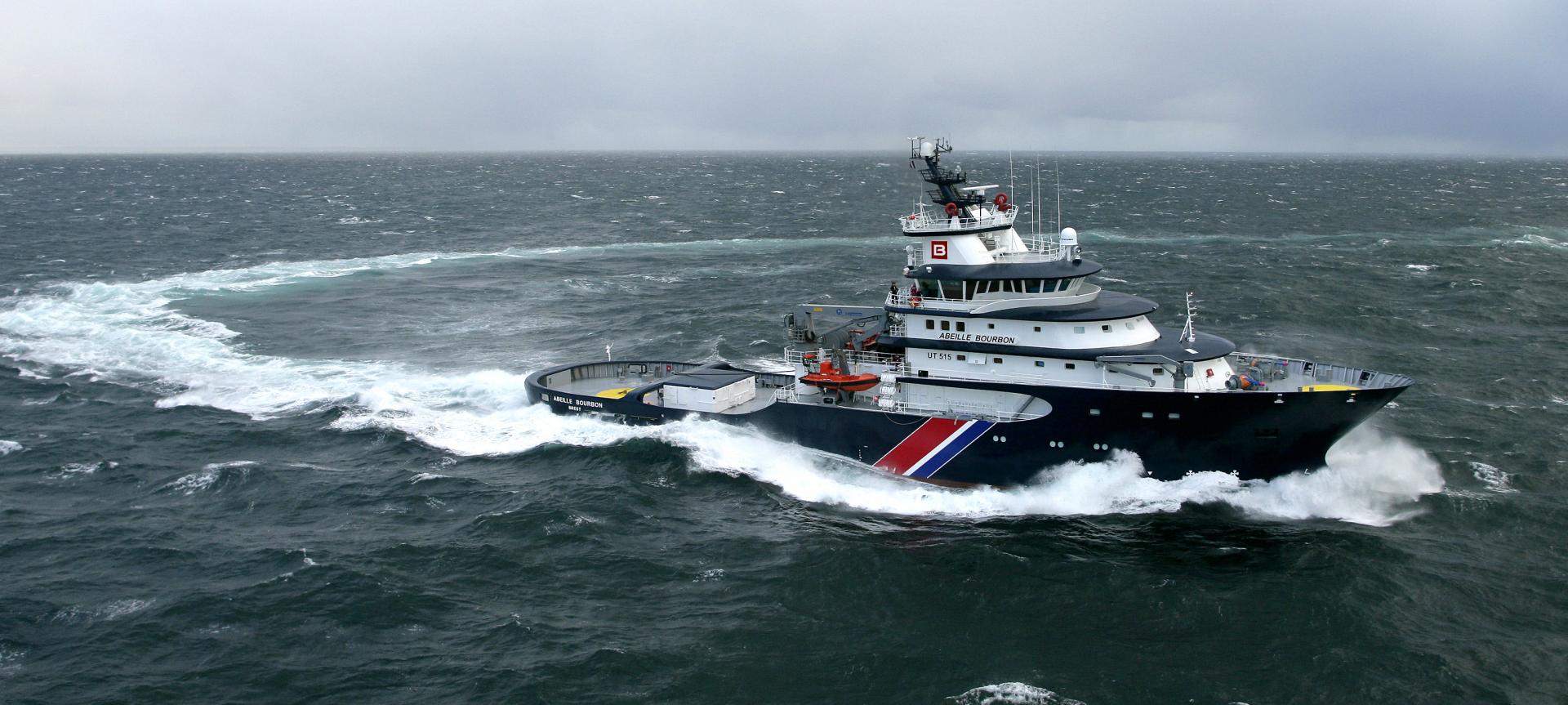
The Abeilles in action on the French coastline
Day and night, in summer and winter alike, the Abeilles assistance and salvage tugs are ready to assist vessels in distress, all along the French coast.
The rescuers of the seas
Five assistance tugs, three support vessels, one mission. Chartered by the French Navy, BOURBON's Les Abeilles tugs protect the coastline and rescue vessels in distress. What does that mean? "A lot of things! Our vessels get involved in the event of engine failures, damaged rudders, fires, leaks on board, collisions and risk of sinking... And it doesn't matter what type of vessel: oil tanker, trawler, merchant vessel, yacht..." says Christian Quillivic, Les Abeilles General Manager. "We are there to prevent any accidental pollution, towing vessels in distress, and of course, to save lives. We are a bit like the 911 of the seas, available around the clock, 365 days a year! " he says.
"We are there to prevent any accidental pollution, towing vessels in distress, and of course, to save lives. We are a bit like the rescuers of the seas, available around the clock, 365 days a year!"Christian QuillivicGeneral Manager of Les Abeilles
No operations are alike
However much the situations might be different, the requirement remains the same: "Rapid intervention by a united, responsive, and versatile team," says Pascal Potrel, Master of the Abeille Liberté, a tug with a bollard pull of 209 tons, based out of Cherbourg. He manages a team of 12 people, including 4 officers and the bosun. "No operation is like another. When we get underway, we don't know what to expect. We're never sure how we will tackle the rescue, until we get on site," explains the captain.
Towing is just one aspect of salvage operations. "Before that, it is often necessary to evacuate people, reduce the risk of pollution, plug leaks, or put out a fire," says Christian Quillivic. "Vital actions for which we have to train and prepare." .
"No operation is like another. When we get underway, we don't know what to expect. We're never sure how we will tackle the rescue, until we get on site."Pascal Potrel Master of Abeille Liberté
Key figures
400
This is the number of assistance and rescue missions operated by Les Abeilles in 30 years of service.
Remaining vigilant at all times
Preparation. This is one of the objectives of standby periods. These are dedicated not only to maintenance of the vessel but also to watches, during which an officer and a seaman listen to maritime traffic activities and respond to calls. The goal: early identification of distress signs. "We have an obligation to get underway within 40 minutes maximum - even less when human lives are at stake - regardless of the weather. This is a real challenge, since most operations take place in the winter, in bad weather, and heavy seas!" says Pascal Potrel.
Good communication with the different players involved in the rescue chain is also key. "We are always in close contact with the maritime prefect and the CROSS* centers. This allows us to intervene while having as much information as possible," he says.
*Regional Operational Center for Surveillance and Rescue

When an incident occurs along the French coastline, the vessel first informs her owner, who in turn contacts a specialist broker, responsible for finding the rescuer. Under an agreement with the Maritime Prefect, a Les Abeilles tug is then sent to the site. But as Pascal Potrel recalls, things are not always that fluid. "In January 2012, the owner of the Federal Miramichi, victim of a propulsion failure, had first contacted a Greek company, whose tug, too old and not very powerful, was unable to take the vessel under tow. Only then did it enter into an assistance contract with BOURBON. But we were already close by, where we had been positioned as a precaution, by order of the Maritime Prefect."
Despite difficult weather conditions, the Abeille Liberté quickly took the bulk carrier under tow.
After the operation, time for dialog
A rescue does not end when the tow is completed. The vessel is returned to assistance configuration and the entire team meets for a discussion. "The goal is to identify what could have gone wrong, identify everyone's weaknesses, and training needs," says Pascal Potrel. "Because there's no maritime rescue school. Experience is the teacher," he concluded.


